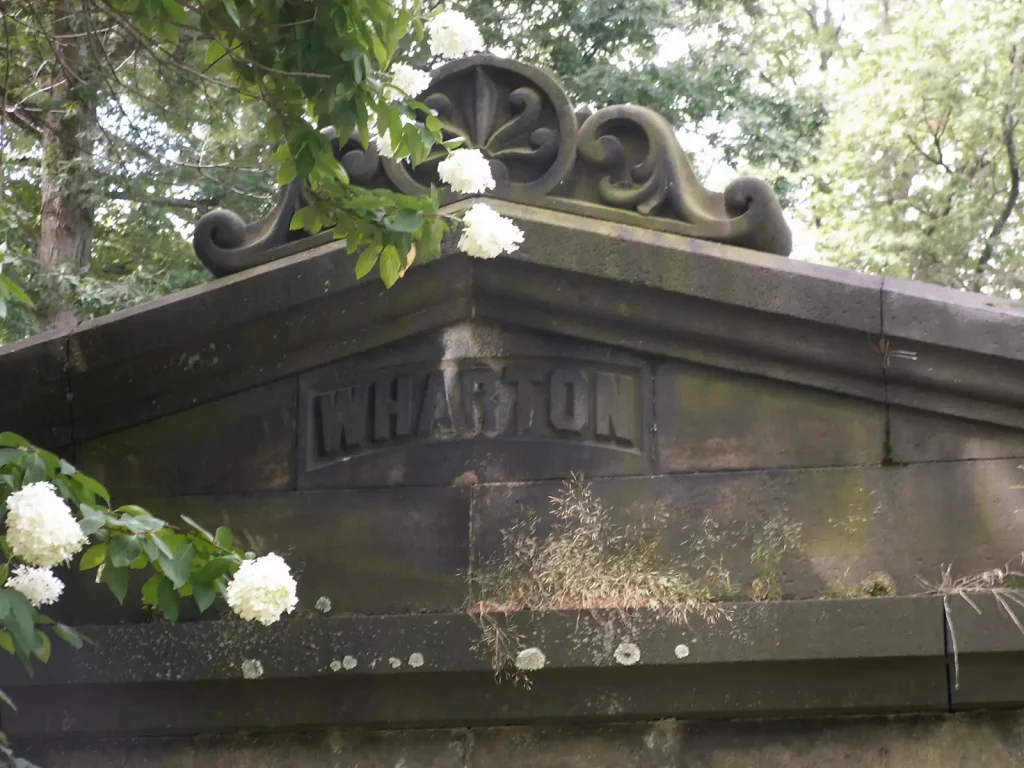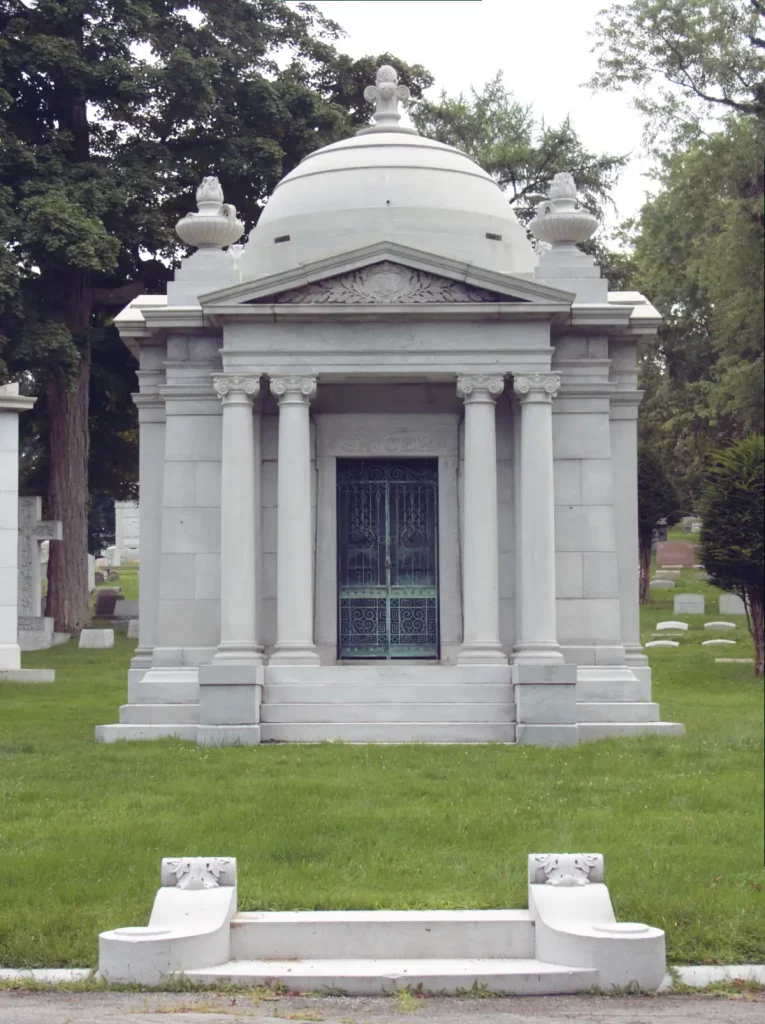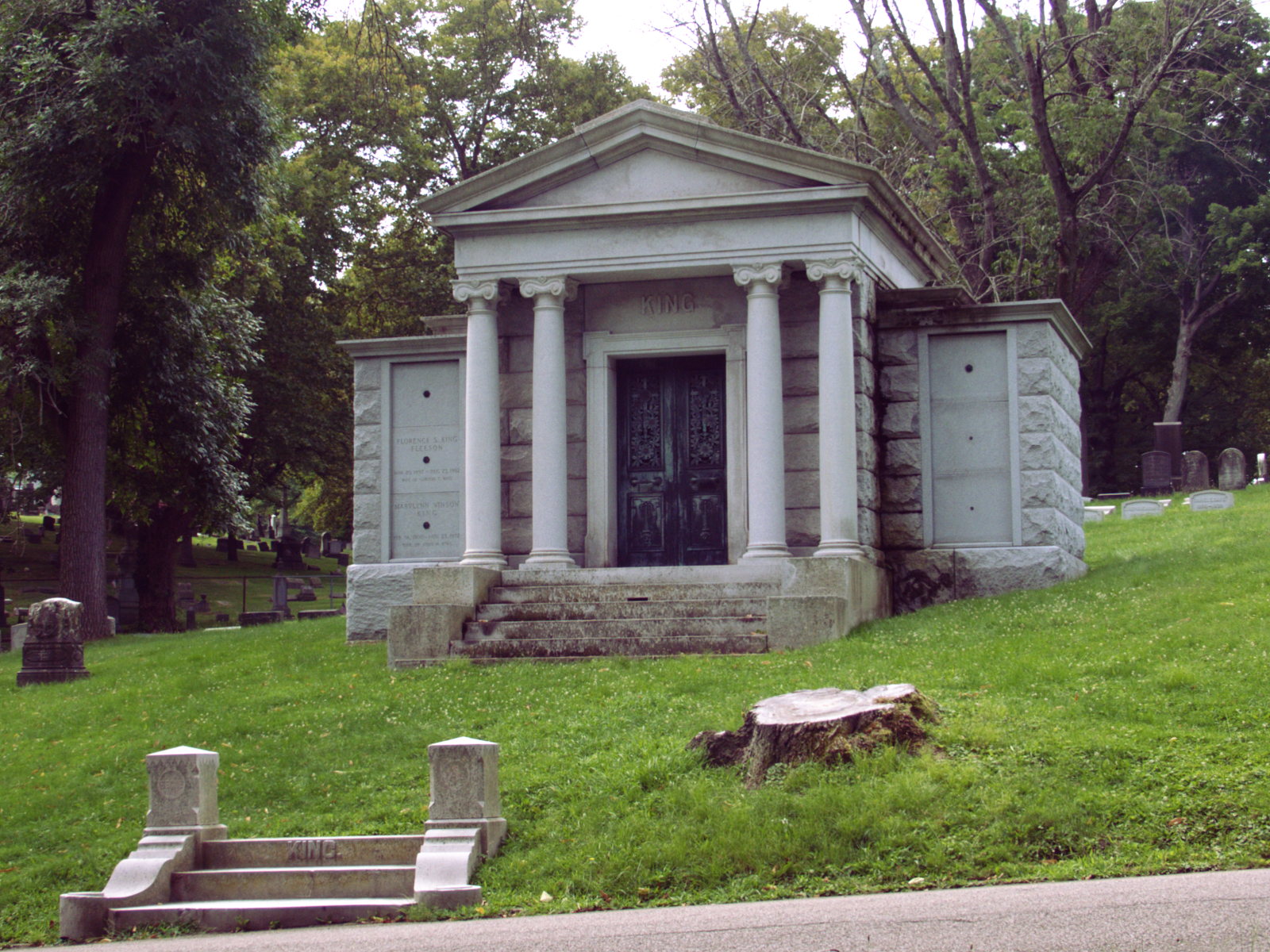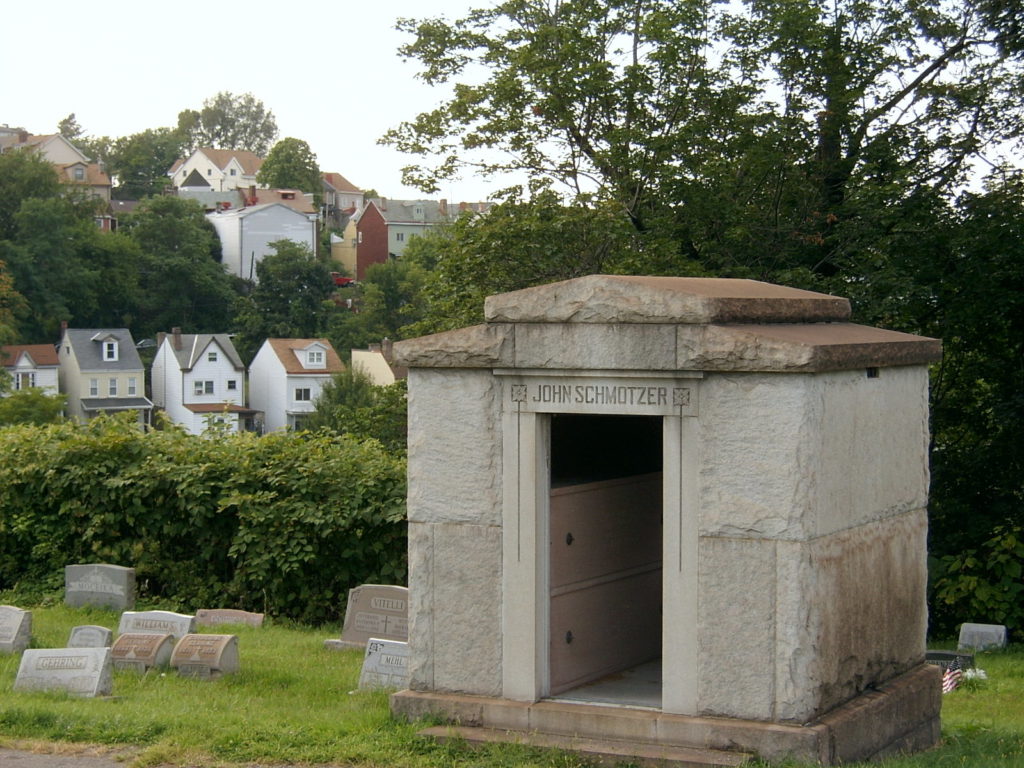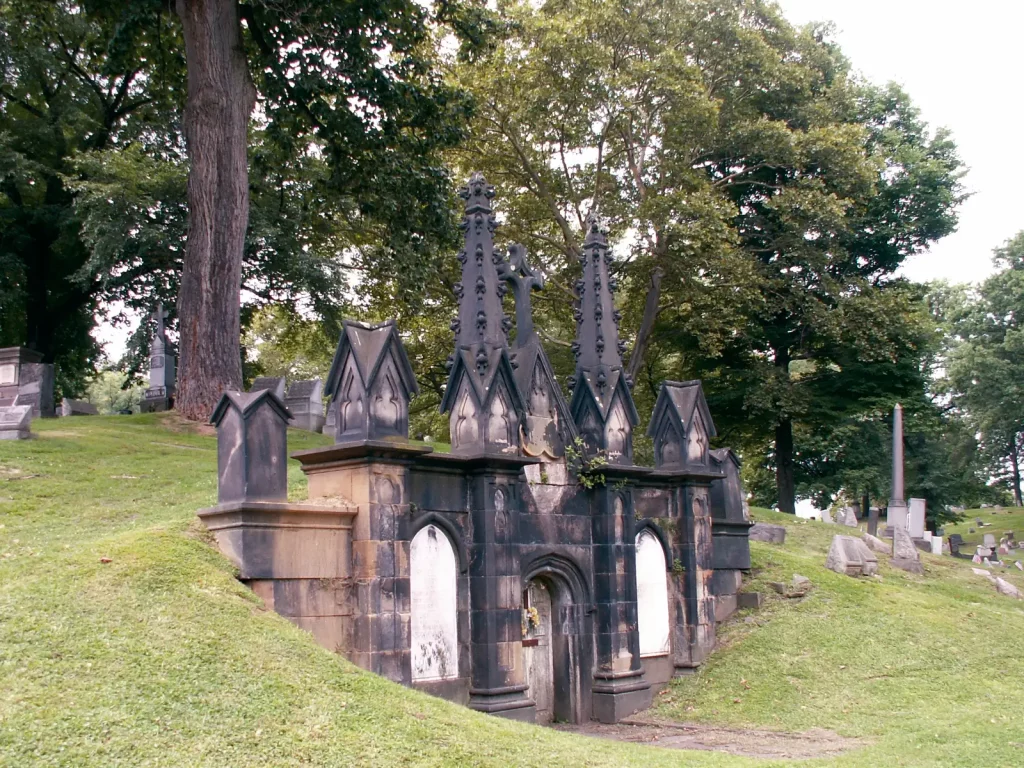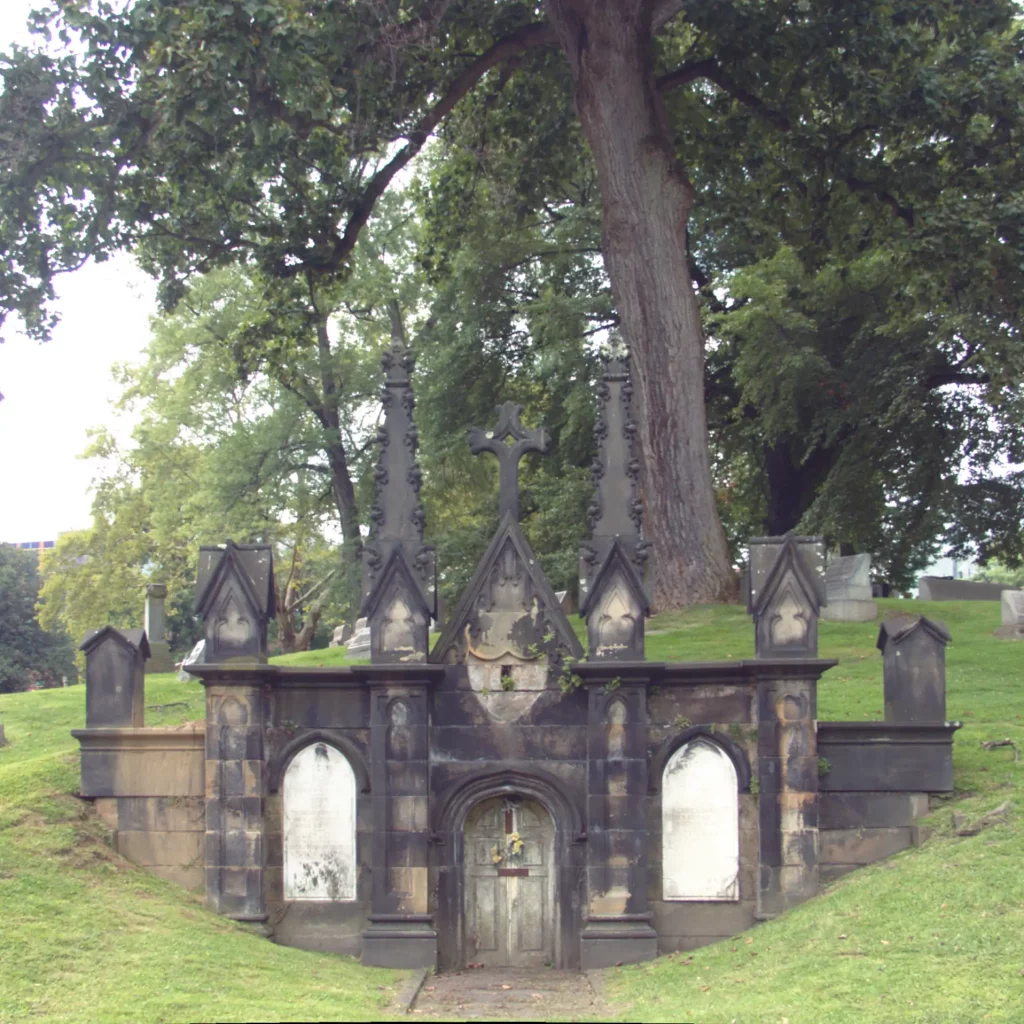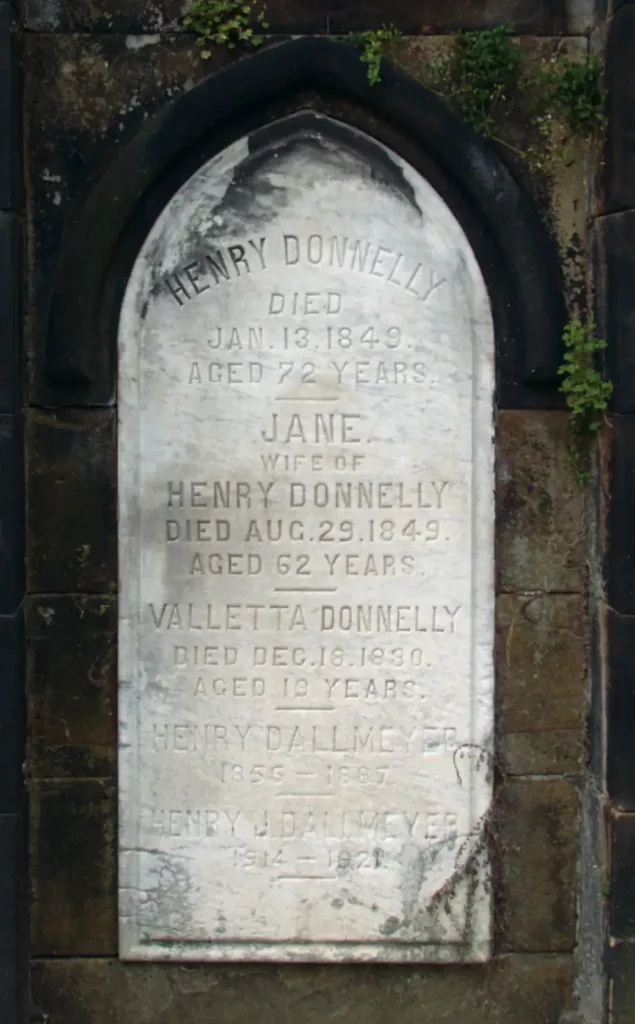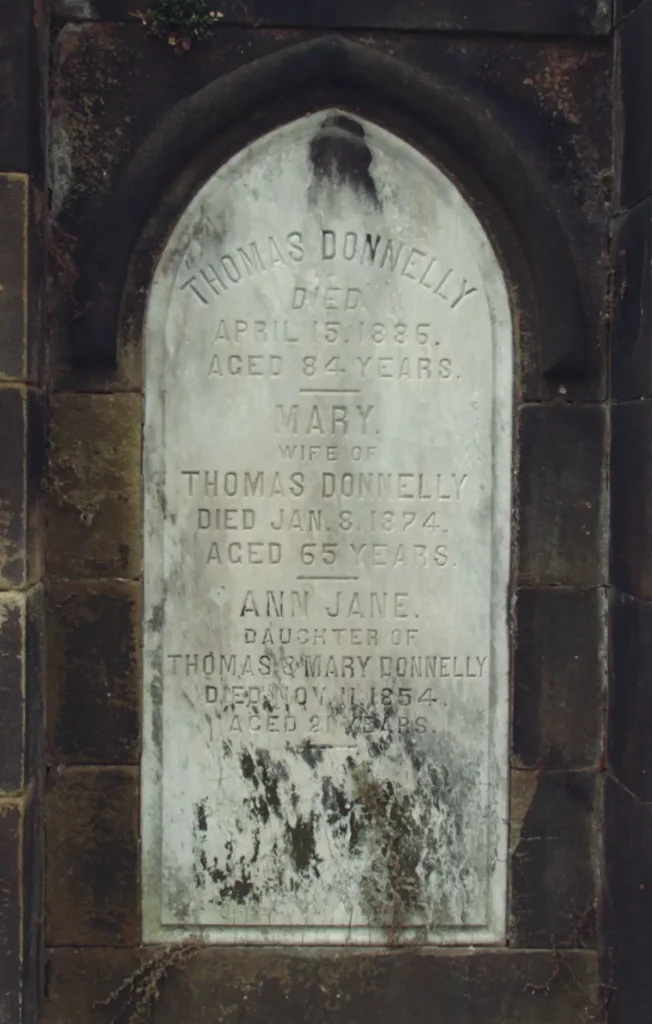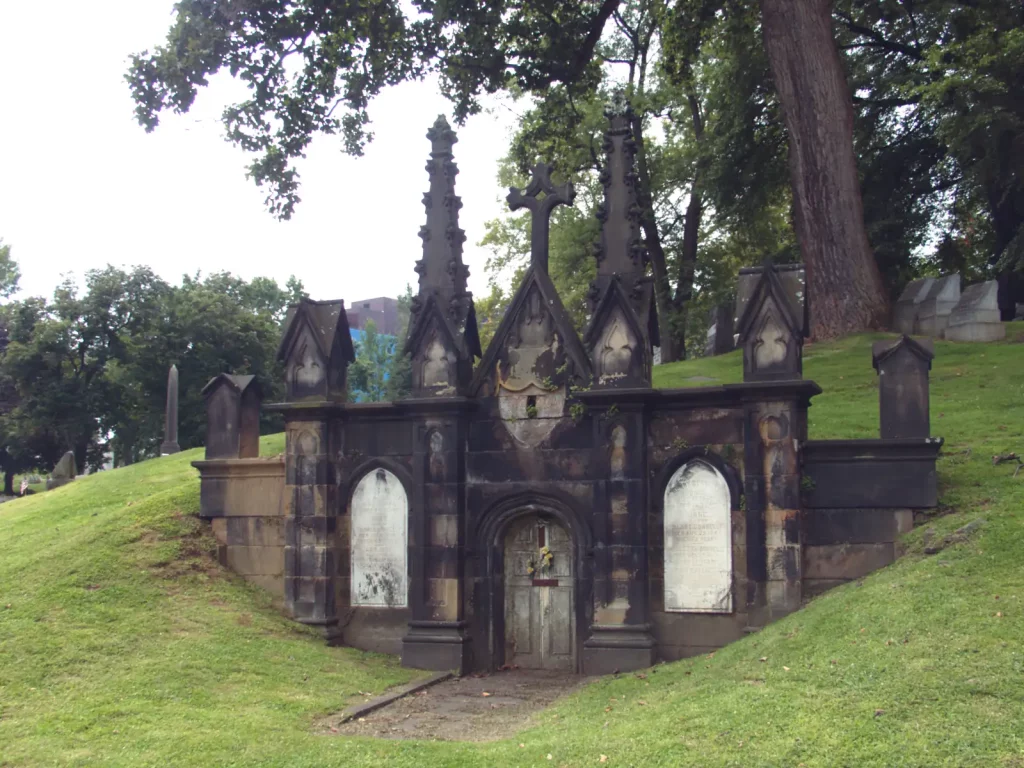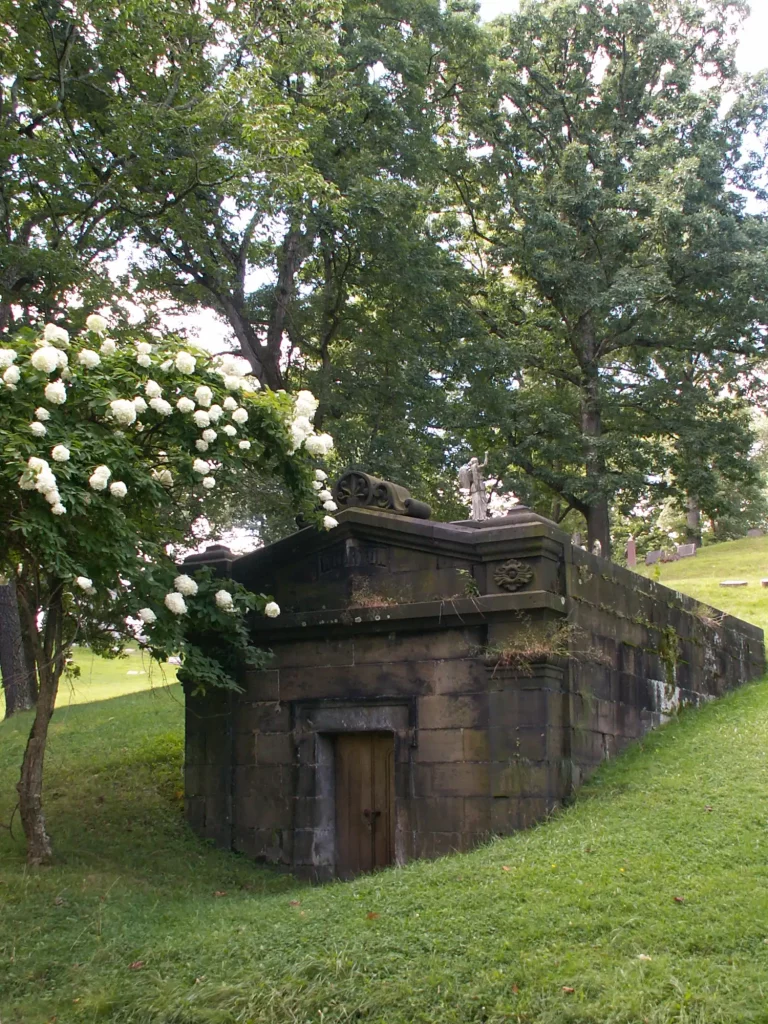
The cemetery site dates this to about 1860; it is one of the early half-underground mausoleums in the cemetery. The simple classical lines are enlivened by just a bit of ornate scrolling on the roof. The cemetery lists the original plot owner as Oliverette Wharton, a resident of East Birmingham (now the section of the South Side between 17th and 24th Streets).
